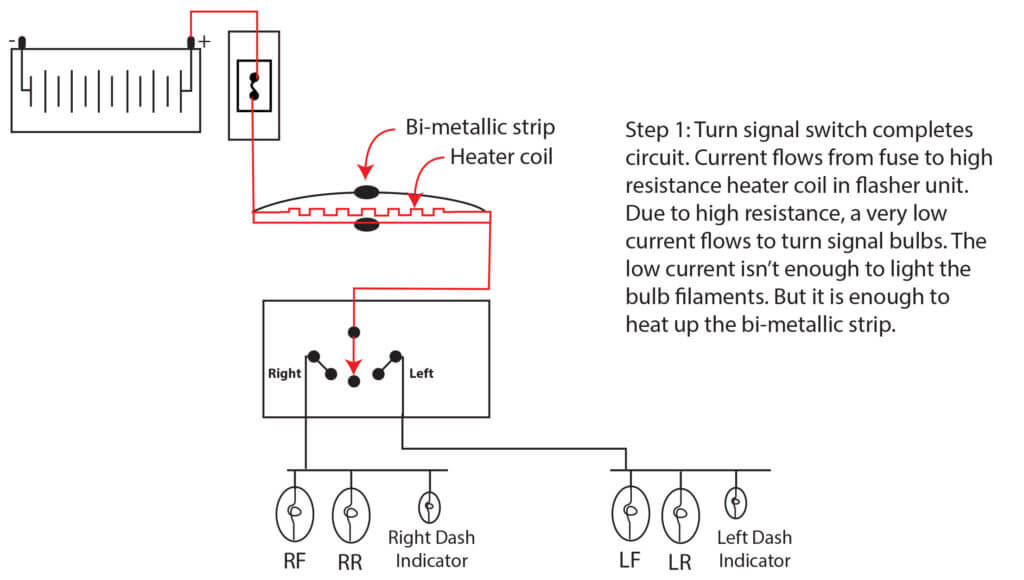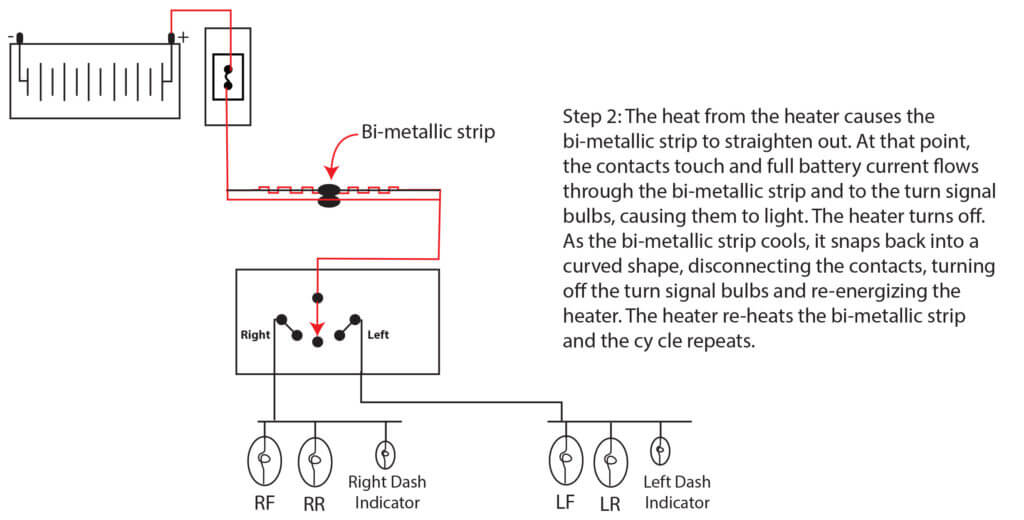How turn signal flasher works
How does a turn signal flasher work?
How a mechanical turn signal flasher works
Many people wonder how the older mechanical (or thermal) turn signal flasher works. They are mechanical switches that switch power to the turn signal bulbs using a bi-metallic strip of metal and a heater. These are called thermal flashers because they relay on a heater and a bi-metallic strip to operate.
How an electronic turn signal flasher works
Late model vehicles use an electronic flasher with no mechanical parts. The flasher measure the amount of current flowing to the turn signal bulbs. If the current draw is in the expected range, a solid state timing mechanism and a transistor turn power on and off to the turn signal bulbs. The electronic flasher generates an audible clicking sound that imitates the older mechanical units to remind the driver that the turn signals are operating.
How a thermal turn signal flasher works
The bi-metallic strip contain and electrical contact and is in a slightly curved shaped when it’s not on. When you operate your turn signals, power flows through the heater in the turn signal and through the turn signal bulbs. Since the heater is a very high resistance wire, the current flow to the bulbs isn’t enough to light them. But the current flow through the heater IS enough to heat up the bi-metallic strip. Once heated, it changes shape and flattens out. That’s when the contacts touch and full current flows to the turn signal bulbs causing them to light up.
While they’re lit, current bypasses the heater and it shuts off, causing the bi-metallic strip to cool. As it cools, it “snap” back to its curved shape. The snapping action is what causes the click.


What causes turn signals to flash fast?
When a turn signal bulb burns out, less current flows through the mechanical flasher, so the bi-metallic strip cools faster and snaps back to its original shape faster. So the on/off cycle runs much faster when even just one bulb is burned out.
An electronic flasher mimics the operation of a mechanical flasher by flashing faster when it detects a lower current draw due to a burned out bulb.
©, 2018 Rick Muscoplat
Posted on by Rick Muscoplat